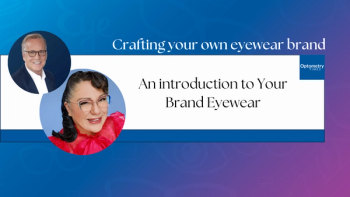
Rethinking prostaglandin analogs side effects
I recently came across a journal publication describing a patient with Crohn’s disease and open-angle glaucoma.1 Essentially, the patient’s treatment with topical latanoprost was associated with an exacerbation of her Crohn’s disease.
When I start a newly-diagnosed
After I’m done documenting patient understanding of these potential side effects, I say something along the lines of, “But, as far as systemic side effects go, this is a very safe drop because it is simply an analog of a naturally occurring substance which we all make in our own bodies anyway.”
I just recently learned, however, that I may be wrong on that last point-some of the time.
Crohn’s and latanoprost
I recently came across a journal publication describing a patient with Crohn’s disease and open-angle glaucoma.1 Essentially, the patient’s treatment with topical latanoprost was associated with an exacerbation of her Crohn’s disease. Discontinuation of the latanoprost resulted in a complete resolution of her symptoms.
We know that prostaglandin analogs have side effects beyond the adnexa and anterior chamber. There are numerous documented occurrences of prostaglandin-induced cystoid macular edema (CME) following cataract extraction.2 (I have seen one case of CME in a phakic patient with no other plausible explanation except for prostaglandin use.) These side effects make sense because prostaglandin analogs are simply mimickers of endogenous prostaglandins, which are inflammatory molecules stemming from the conjugation of arachidonic acid. Patients with anterior uveitis tend to have relatively low intraocular pressure (and red eyes) because they have inflammatory molecules such as prostaglandins floating around in their anterior chambers. A couple of months ago during a glaucoma therapeutics lecture, I showed a diagram of the arachidonic acid cascade and was immediately made cognizant of the fact that people who have already passed biochemistry tend to never want to see that diagram again in their lives.
The art of the warning
Although the point of any topical therapy is to deliver a bolus of the drug to a targeted area of the body, systemic absorption commonly occurs and should be expected. We are made aware of this when patients taking a topical beta blocker or a beta blocker-containing combination drop report weakness and/or breathing difficulties. We warn patients of common side effects such as these, and, as with most of eye care, there is an art to doing so. By this I mean there is a difference between warning someone of the most common things to expect when starting a new medication and reading a table of side effects from Clinical Ocular Pharmacology3 verbatim. (I’m reminded of those commercials that come on during golf tournaments in which more time is spent describing side effects than actually explaining the drug’s purpose.) We want the patient to understand what she is taking, but we want to do so in a manner that doesn’t make her think we are doing more harm than good by prescribing said medication.
For my entire clinical career (all seven years of it), prostaglandin analogs have been another one of those medications that took the emotion right out the systemic side effect conversation. However, this Crohn’s case report is making me think a little more about that conversation, or lack thereof.
References:
1. Paul S, Wand M, Emerick GT, et al. The role of latanoprost in an inflammatory bowel disease flare. Gastroenterol Rep (Oxf). 2014 Jul 26.
2. Agange N, Mosaed S. Prostaglandin-induced cystoid macular edema following
routine cataract extraction. J Ophthalmol. 2010;2010:690707.
3. Bartlett JD, Jaanus SD. Clinical Ocular Pharmacology: Fourth Edition. Butterworth-Heinemann. Woburn, MA.
Newsletter
Want more insights like this? Subscribe to Optometry Times and get clinical pearls and practice tips delivered straight to your inbox.



















































.png)


